Abstract
The white rot fungus Trametes (Coriolus) versicolor can delignify and brighten unbleached hardwood kraft pulp within a few days, but softwood kraft pulps require longer treatment. To determine the contributions of higher residual lignin contents (kappa numbers) and structural differences in lignins to the recalcitrance of softwood kraft pulps to biobleaching, we tested softwood and hardwood pulps cooked to the same kappa numbers, 26 and 12. A low-lignin-content (overcooked) softwood pulp resisted delignification by T. versicolor, but a high-lignin-content (lightly cooked) hardwood pulp was delignified at the same rate as a normal softwood pulp. Thus, the longer time taken by T. versicolor to brighten softwood kraft pulp than hardwood pulp results from the higher residual lignin content of the softwood pulp; possible differences in the structures of the residual lignins are important only when the lignin becomes highly condensed. Under the conditions used in this study, when an improved fungal inoculum was used, six different softwood pulps were all substantially brightened by T. versicolor. Softwood pulps whose lignin contents were decreased by extended modified continuous cooking or oxygen delignification to kappa numbers as low as 15 were delignified by T. versicolor at the same rate as normal softwood pulp. More intensive O2 delignification, like overcooking, decreased the susceptibility of the residual lignin in the pulps to degradation by T. versicolor.
Full text
PDF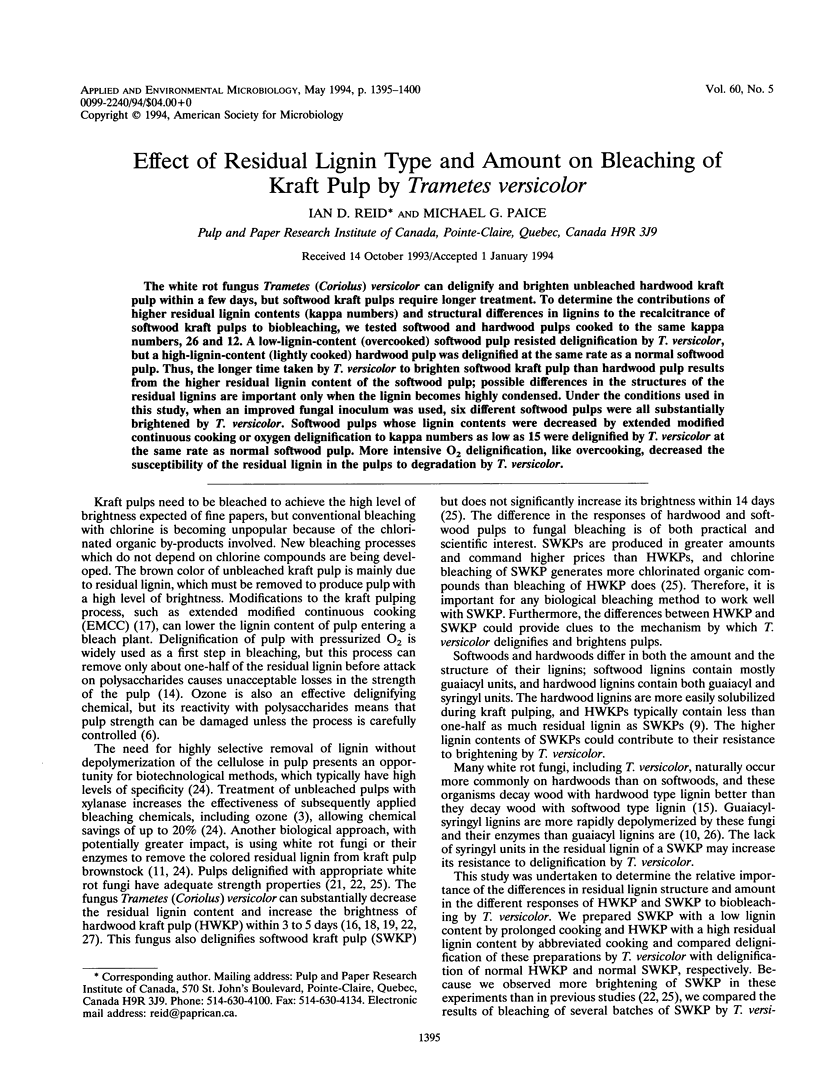

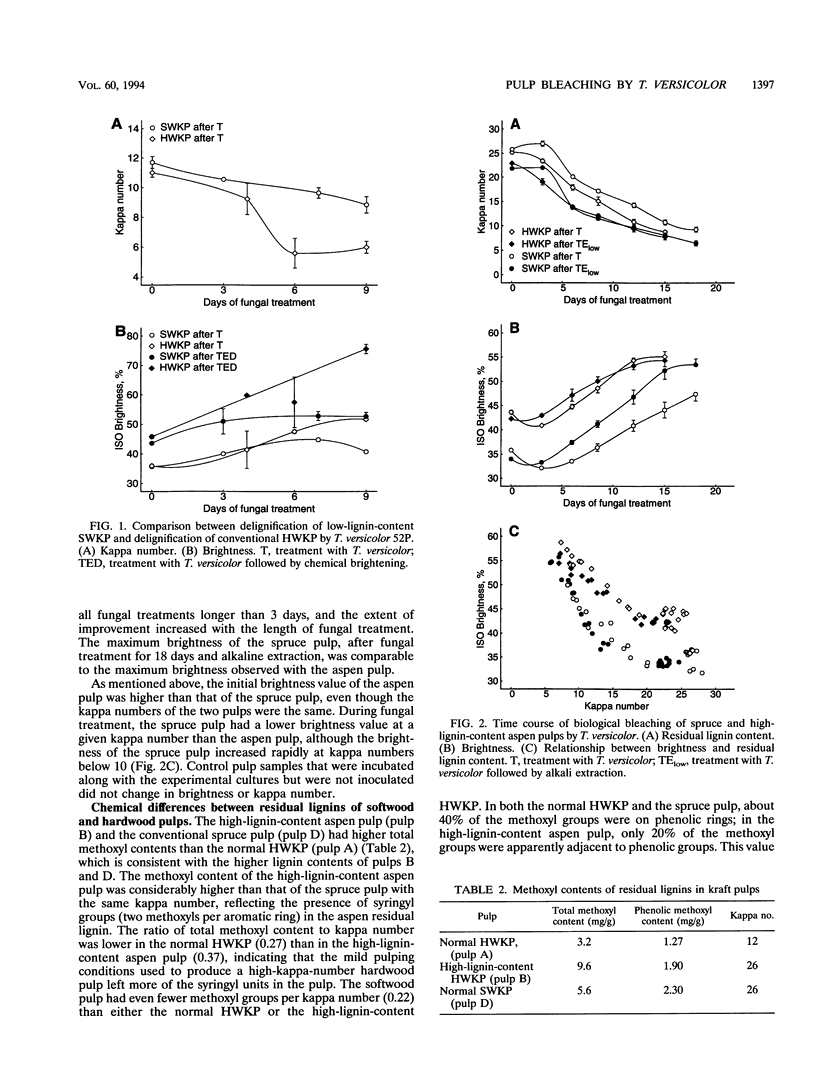
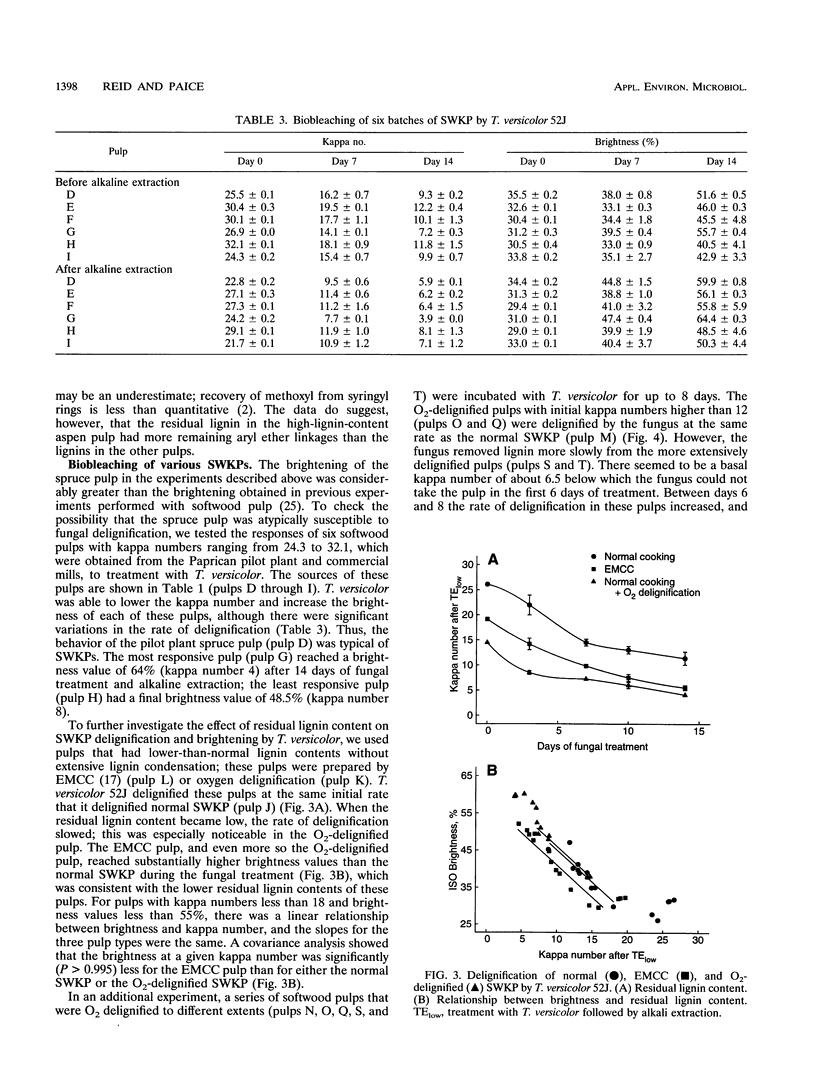
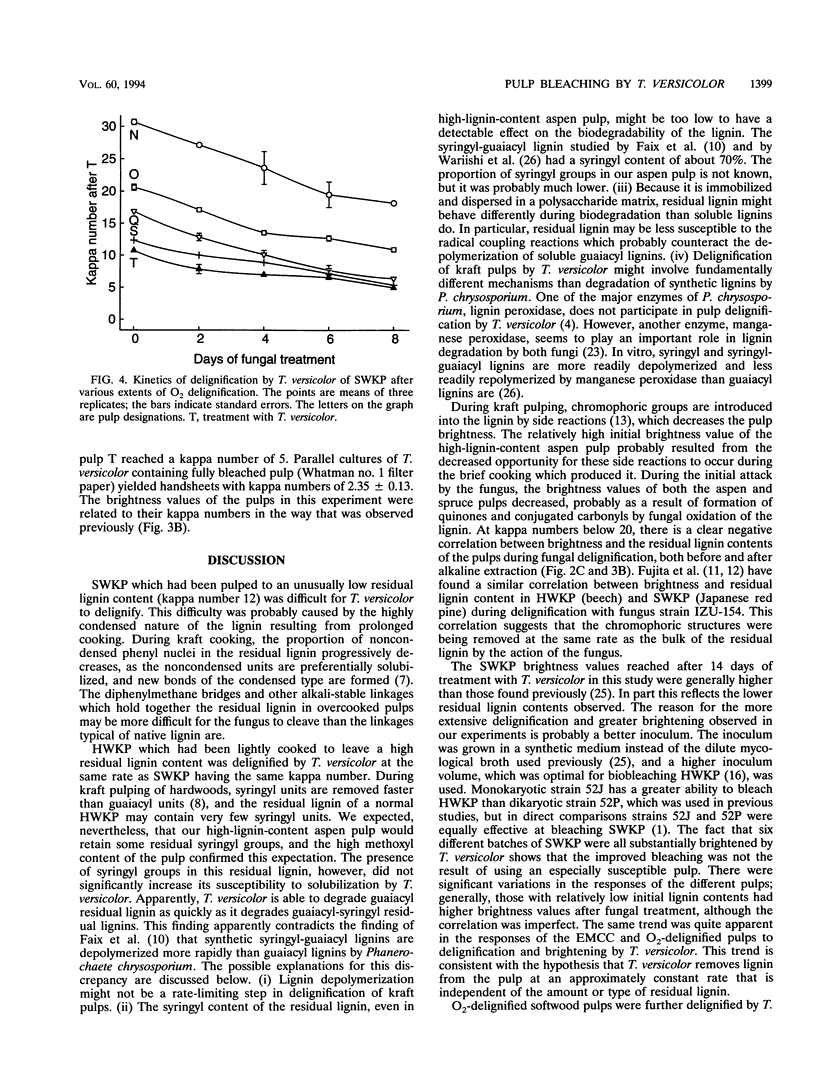
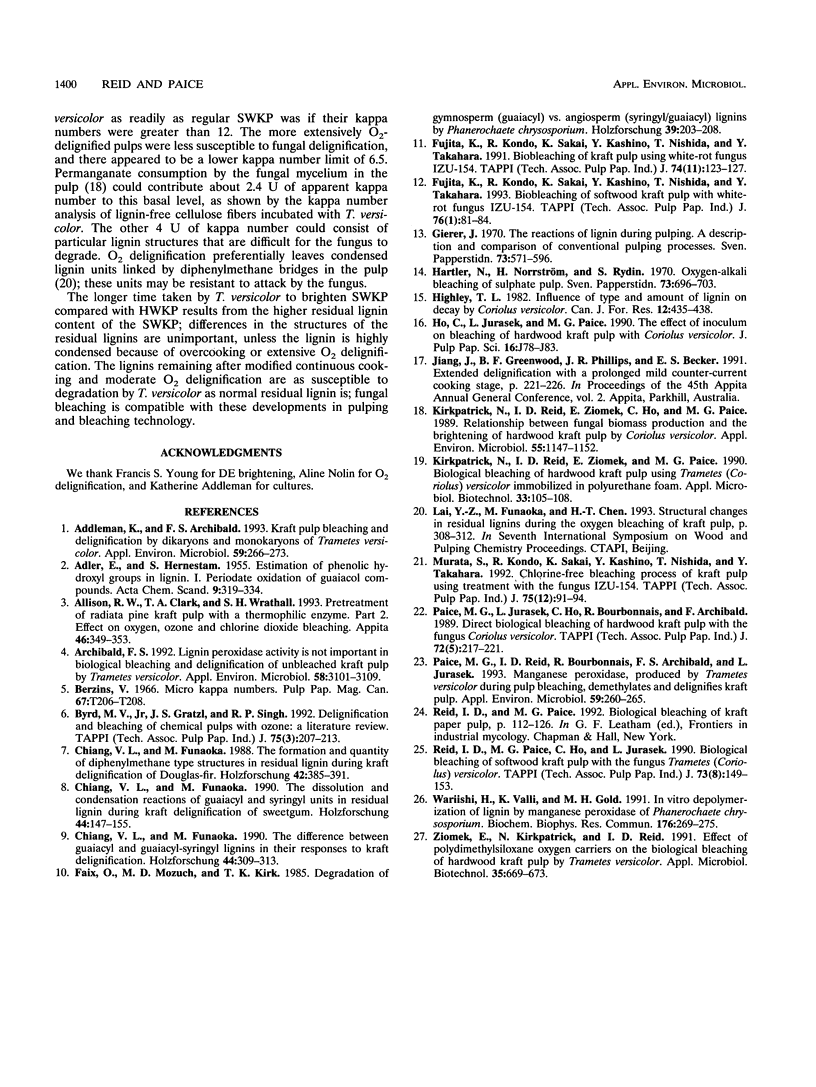
Selected References
These references are in PubMed. This may not be the complete list of references from this article.
- Addleman K., Archibald F. Kraft Pulp Bleaching and Delignification by Dikaryons and Monokaryons of Trametes versicolor. Appl Environ Microbiol. 1993 Jan;59(1):266–273. doi: 10.1128/aem.59.1.266-273.1993. [DOI] [PMC free article] [PubMed] [Google Scholar]
- Archibald F. S. Lignin Peroxidase Activity Is Not Important in Biological Bleaching and Delignification of Unbleached Kraft Pulp by Trametes versicolor. Appl Environ Microbiol. 1992 Sep;58(9):3101–3109. doi: 10.1128/aem.58.9.3101-3109.1992. [DOI] [PMC free article] [PubMed] [Google Scholar]
- Kirkpatrick N., Reid I. D., Ziomek E., Ho C., Paice M. G. Relationship between Fungal Biomass Production and the Brightening of Hardwood Kraft Pulp by Coriolus versicolor. Appl Environ Microbiol. 1989 May;55(5):1147–1152. doi: 10.1128/aem.55.5.1147-1152.1989. [DOI] [PMC free article] [PubMed] [Google Scholar]
- Paice M. G., Reid I. D., Bourbonnais R., Archibald F. S., Jurasek L. Manganese Peroxidase, Produced by Trametes versicolor during Pulp Bleaching, Demethylates and Delignifies Kraft Pulp. Appl Environ Microbiol. 1993 Jan;59(1):260–265. doi: 10.1128/aem.59.1.260-265.1993. [DOI] [PMC free article] [PubMed] [Google Scholar]
- Wariishi H., Valli K., Gold M. H. In vitro depolymerization of lignin by manganese peroxidase of Phanerochaete chrysosporium. Biochem Biophys Res Commun. 1991 Apr 15;176(1):269–275. doi: 10.1016/0006-291x(91)90919-x. [DOI] [PubMed] [Google Scholar]


